You’ve probably already heard that affiliate marketing is a low-risk, low-cost and highly lucrative revenue stream. That sounds enticing if you’re a budding entrepreneur looking for a solid source of side revenue or a full-time digital marketing job. But is there more to it?
Affiliate marketing is a huge industry. Global affiliate marketing spending is expected to hit $15.7 billion in 2024, showcasing its widespread adoption. A remarkable 81% of advertisers use an affiliate marketing strategy, which relies on people like you to create content.
The popularity of affiliate marketing has led to a saturated market. Practically every blogger and influencer does sponsored content for extra money, but many haven’t done the strategic research and planning to thrive.
This guide is for you if you want a competitive edge to succeed in this landscape. We’ll show you how to get started with affiliate marketing, including ideas for content and predictions of how much you’ll make.
What is affiliate marketing?
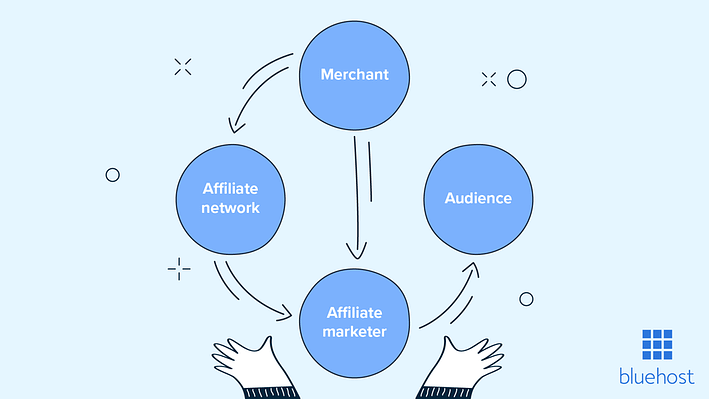
The allure of affiliate marketing is its simplicity. Join an affiliate program, insert sponsored links into your content and receive affiliate commissions when readers make a purchase.
The allure of affiliate marketing is its simplicity. Join an affiliate program, insert sponsored links into your content and receive affiliate commissions when readers make a purchase.
The mechanics remain the same whether you promote physical or digital products and services. Affiliate marketing works in various content mediums; you can grow a blog, build a social media presence or pull a crowd with video production. You’ll need a platform to host the links, typically a WordPress affiliate marketing website.
While no specialized skills are strictly necessary, proficiency in communication and digital media will help you grow an audience by creating strategic content that generates interest. This guide will teach you affiliate marketing strategies to use regardless of your background.
Affiliate marketing experience opens up opportunities in other digital industries: Writing, editing, publishing, marketing and sales, to name a few. Proving yourself to be an expert creator, communicator or salesperson can lead to a lifelong career or full-fledged affiliate marketing business.
How much money will you make in affiliate marketing?
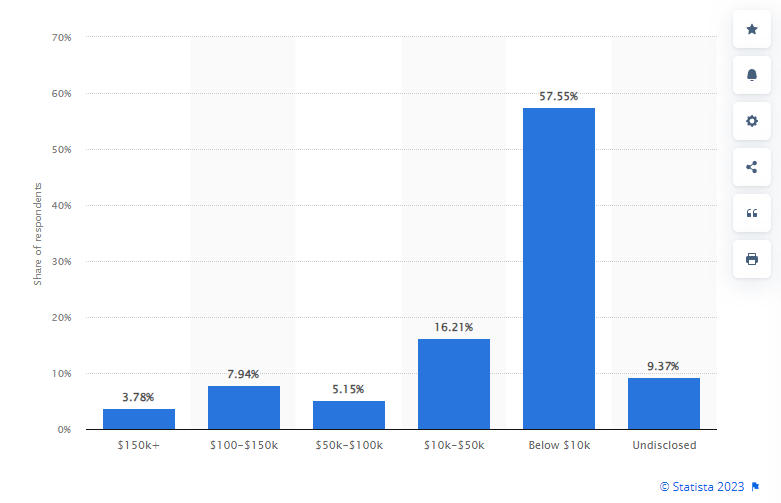
While income can vary wildly within most industries, here’s what to expect as you make money online with affiliate marketing.
If you’re eyeing a salaried position, note the average pay for an in-house affiliate marketer is $82,000 annually.
However, most affiliate marketers are freelancers earning $10,000 or less per year. It’s safe to assume most of them rely on a primary source of income, which is a good idea for beginner affiliate marketers.
The basis of your affiliate income will be links — and, more importantly, the effectiveness of those links. The average affiliate conversion rate is 2.4%, and the average commission rate ranges from 10% to 30%. For a few select industries, like SaaS, you could make up to 70%.
To illustrate: If you’re performing up to par, for every 100 people who click your affiliate link, two will make a purchase. Provided you’re promoting a $100 product at a 20% commission rate, you’ll earn $40 for every 100 clicks.
Some marketers are earning over $100,000 per year after significant growth, bringing in myriads of clicks and making high-commission deals with top-tier partners. Until then, affiliate marketing works best as a passive income supplementing your main gig.
How to get started with affiliate marketing
- Choose a niche and build a platform: Pick an expertise or passion and establish an online presence.
- Find affiliate marketing programs: Scout and join programs from reputable businesses that align with your chosen niche.
- Create quality content: Craft engaging, high-quality content that resonates with your audience. Insert your affiliate links.
- Optimize your strategy: Fine-tune your marketing approach to boost visibility and conversions.
Getting into affiliate marketing is straightforward, even if you’re starting from scratch. Let’s break it down step by step, starting with selecting a target market.
Step 1: Choose a niche and build a platform
The industry you choose to focus on will significantly impact your affiliate revenue; do research to decide where you should focus your efforts. To begin this affiliate marketing for beginners guide, ask yourself these questions:
- What topics and industries am I genuinely passionate about?
- What products and services have I used before that I would recommend?
- Do I have any connections or experience in an industry? Do I have a good reputation or an audience anywhere online?
- Are there high commission rates in my desired industry? Does it have a good track record for affiliate marketing?
- Who is my target audience? What demographic am I catering my content to? What problems am I solving?
- Which topics and industries are in high demand for my target audience? Is this likely to be a long-term interest or a short-lived trend?
- Who is my competition in this industry? What do I bring to the table that they don’t?
The next step is to set up a website to host your content.
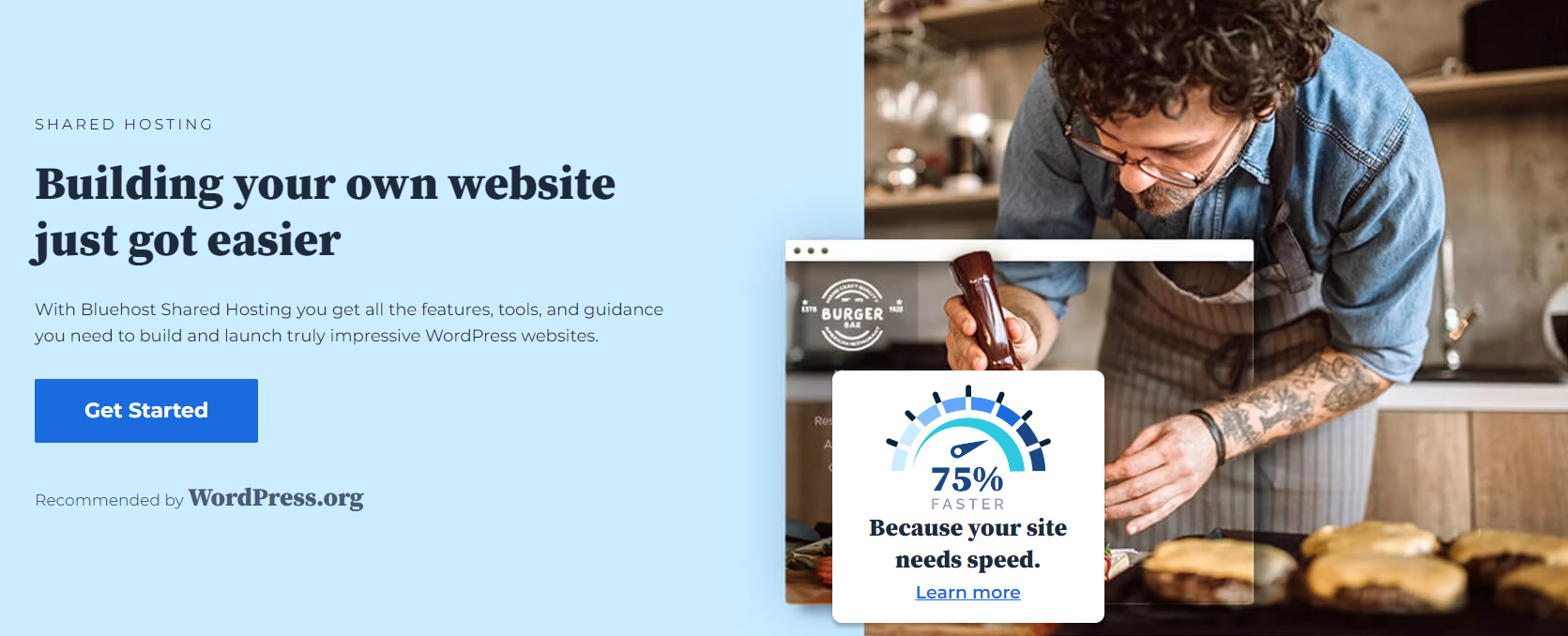
You can set up a complete website with zero coding if you use WordPress with Bluehost — and go live on the internet ASAP with hosting under $3.
After that, make accounts on social media apps like Instagram, TikTok and YouTube; they’re the internet’s biggest hubs for content creation.
Step 2: Find affiliate marketing programs

Now that you’re all set up, find suitable affiliate marketing programs. An easy way to get started is to join an affiliate network, which serves as a middleman connecting marketers to brands. Here are a few of the best affiliate programs:
- Amazon Associates: Attached to a brand that needs no introduction, this program is a good choice for beginners who want to market physical products.
- ShareASale: It’s a very popular network and features merchants from a diverse range of industries.
- ClickBank: This network is known for connecting marketers to digital products and services.
- Rakuten Marketing: This network specializes in fashion, lifestyle and retail products.
- CJ Affiliate: Revisit this network when you have some experience and an established online presence.
Alternatively, look up individual products and companies relevant to your chosen niche. Check company websites to see if they have an affiliate policy. Many brands run programs independently; even Bluehost has an affiliate marketing program to promote web hosting.
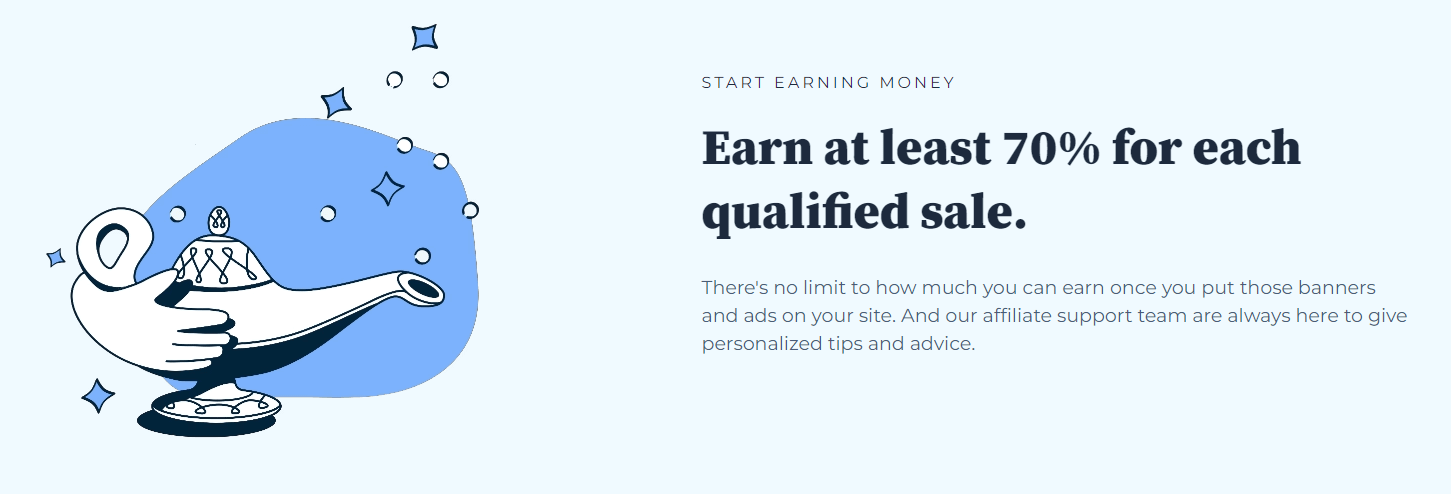
Another approach is to search for affiliate program directories that extensively list companies with affiliate programs.
Even if your favorite brand doesn’t publicly offer an affiliate program, reach out directly if you have a sizable audience. There’s a significant chance you can form a partnership to promote their products in some way.
Step 3: Create quality affiliate content
With a few affiliate programs to work with, start creating marketing content and weaving in sponsored links. In the next section, you’ll get ideas for content you can make. For now, note the following important guidelines.
- Produce well-made, informative and engaging content.
- Promote products and services that your audience will appreciate.
- Be honest and genuine when promoting a product. Use your personal experience with products to craft an authentic narrative.
- Stick closely to your topic and let natural opportunities arise for your affiliate links.
- Use compelling calls to action (CTAs) when inserting affiliate links.
WordPress plugins like Pretty Links allow you to shorten affiliate URLs and track clicks. Plugins can also automatically insert links into related keywords across your website, but beware: Thoughtfully tailored content often proves more effective in affiliate marketing for beginners.
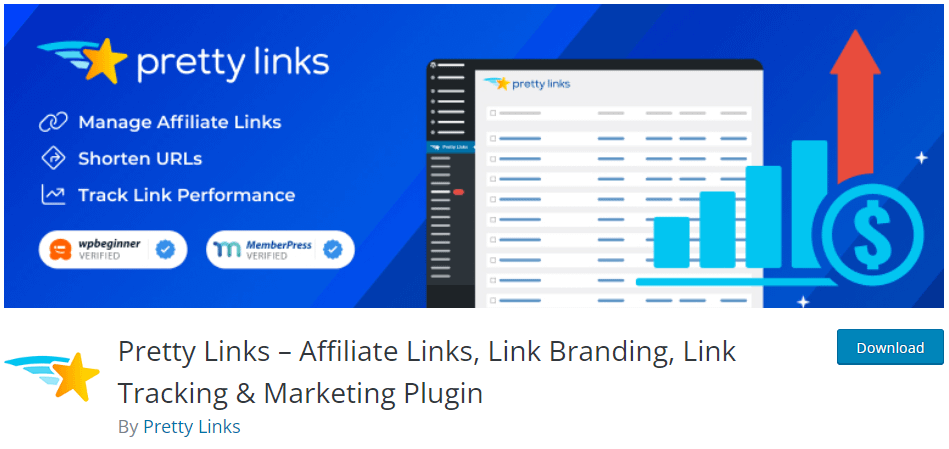
In the U.S., it’s required by law that you disclose your affiliate relationship when discussing a product. Even in countries with no such law, most affiliate programs require you to disclose that you’re being compensated. Being transparent with your audience will build trust.
Step 4: Optimize your content
It takes strategy, time and grit to create content that draws a crowd and resonates with people. Start by posting your best shot, then patiently optimizing and refining.
- Learn search engine optimization (SEO) basics: Check out a beginner’s guide to SEO, which will help you master the crucial skill of making your content more visible and effective on search engines.
- Implement tracking and analytics: Set up Google Analytics to track clicks, analyze user behavior and identify which content performs best for you.
- Leverage the data: Use your analytics data to improve your affiliate content. Increase the production of your most anticipated content and double down on the successful approaches to links.
With this mindset, you’re well on your way to affiliate marketing success.
Types of affiliate content you can create
Whether you’re writing compelling blog posts, creating unique video content, making product reviews or crafting trendy social media posts, you have diverse options to captivate your audience.
Blog posts
Writing and publishing a blog post can result in a click magnet for years to come. This includes posts that don’t entirely focus on a particular product. Here are a few ideas:
- Pick a relevant topic: For example, if you’re promoting a dress, you could write blog posts about recent trends in women’s style or tips to develop a personal fashion sense.
- Strategically position links: Consider the best time to insert a link. What are some pain points for your readers? Bring these up, then link to a product that solves the issue.
- Include compelling visuals: Use high-quality images of the product or create your own visual assets to attract and inform viewers.
- Use a strong call to action: When you link to a webpage, instead of using generic phrases like “click here,” try specific and informative phrases like “get a free quote in minutes.”
Since writing a blog post is approachable and relatively fast, blogging is a classic start to affiliate marketing for beginners.
Product reviews and tutorials
What better way to generate interest than holding a crash course in the product? As an influential figure in your audience’s eyes, they will be more willing to try something you demonstrate and then endorse.
- Showcase a product: Go in-depth into its features, benefits and use cases. Provide an authentic review that includes what you liked and disliked.
- Create product tutorials: Walk readers through setting up software or assembling a physical item. Show the product at its best in action.
- Be honest: A glowing testimony about a sub-par product could lead to your audience losing trust in you. You don’t need to post a scathing takedown either; if you have concerns, highlight the positives and negatives with constructive criticism.
Product rankings and roundups
A subtle way to promote sponsored products is to compile and compare a variety of similar products. If you have affiliate links for adjacent or competing brands, this is one way to get them all in one place.
- Rank various products: Compare similar products, highlighting benefits and drawbacks and assigning a final rating. This is a common practice for digital services — it works for physical products, too.
- Create product roundups: Make holiday gift lists and checklists of essential tools for particular hobbies. These are great at generating engagement and fulfilling readers’ needs at the same time.
Resources and references
Build credibility and drive engagement by offering valuable, tailor-made resources full of helpful information. From blog posts to eBooks to in-depth videos, pick the best environment for your target audience to learn.
- Downloadable templates: Whether it’s weekly workout planners or vacation packing guides, downloadable templates can attract a lot of clicks.
- eBooks: If you have the patience, write a book on an industry topic you’re an expert in. Whenever it feels natural, link to sponsored products.
- Online courses: Create a series of digital classes to instruct your visitors in a skill or interest.
Landing pages
Simply put, a landing page is a webpage designed to achieve conversions — in this case, a sale through an affiliate link. Landing pages typically include everything a viewer would care about before deciding to buy; it’s basically an elevator pitch or doorstep sales routine, but online.
By meticulously tweaking the content, design and call-to-action links on individual pages, you can amplify the impact of your affiliate promotions and boost the likelihood of conversions.
Don’t create a custom landing page for every affiliate product. First, try it for your highest commission products. Promote your landing page link on your website, social accounts and other platforms to drive conversions.
Videos
If you watch popular YouTube channels or follow well-known personalities on social media, you’ve probably seen them promoting sponsored products in their videos; you can do it, too. Showcase the product on camera, then insert your affiliate links in the video description.
Social media posts
While long-form content, like blog posts and resources, typically leads to more clicks over months and years, a well-timed social post can quickly generate a ton of affiliate sales in a day or week.
The goal is to make a significant impact with limited space. Most social platforms limit word count or video length — short-form content is the norm there.
Write engaging copy that gets straight to the point. Record quick and punchy videos using pictures or GIFs to get your point across instantly.
Email marketing
To start email marketing, you need to grow a list of people who subscribe to your emails. It’s only legal to send mass emails for business if each recipient gave you permission to do so.
Building up an email list requires a platform like Mailchimp. Create an email signup form to promote on your website or social accounts. People will opt in if you’re offering weekly or monthly content that’s relevant, entertaining and useful.
Next, craft your emails, include your affiliate links and schedule the posts.
Final thoughts: How to start affiliate marketing in 2024
Now that you know how to start affiliate marketing, look forward to a thriving industry with the potential to earn a lot of money.
By applying the tips from this guide, your chances of success go way up. Thousands of people blunder into affiliate marketing with hardly an idea of what they’re doing. In contrast, a refined strategy and determination will take you far.
Are you ready to set up your affiliate website and start? Begin with Bluehost’s affordable web hosting. WordPress plans include an automatic installation and simplified setup to help beginners launch fast. Plus, the technical aspects are managed by Bluehost’s team of experts.
How to start affiliate marketing for beginners: FAQs
Anyone can link to a company’s product page, but an affiliate link is a unique URL that businesses assign. The URL contains special characters that identify you as the marketer. This way, the company can track how many people click that particular link and how many sales occur because of it. You get paid accordingly.
Affiliate marketing operates on a commission-based model; companies pay you to drive traffic and sales. The business provides you with affiliate links that lead to its products. Your job is to gain interest from people until they use your affiliate link to make a purchase. For every purchase, you get paid a percentage by the company or the intermediary affiliate network.
Some affiliate networks (especially those with higher commissions) may have fees, but many are free, like Amazon Associates. Pair this with free content creation avenues like YouTube and TikTok. Your affiliate links will need a home base; you can set up a website for as little as $2.95 per month with Bluehost. You’ll also get a free domain for the first year.
The post Affiliate Marketing for Beginners: How To Get Started in 2024 appeared first on Bluehost Blog.
[ad_2]
Article link
